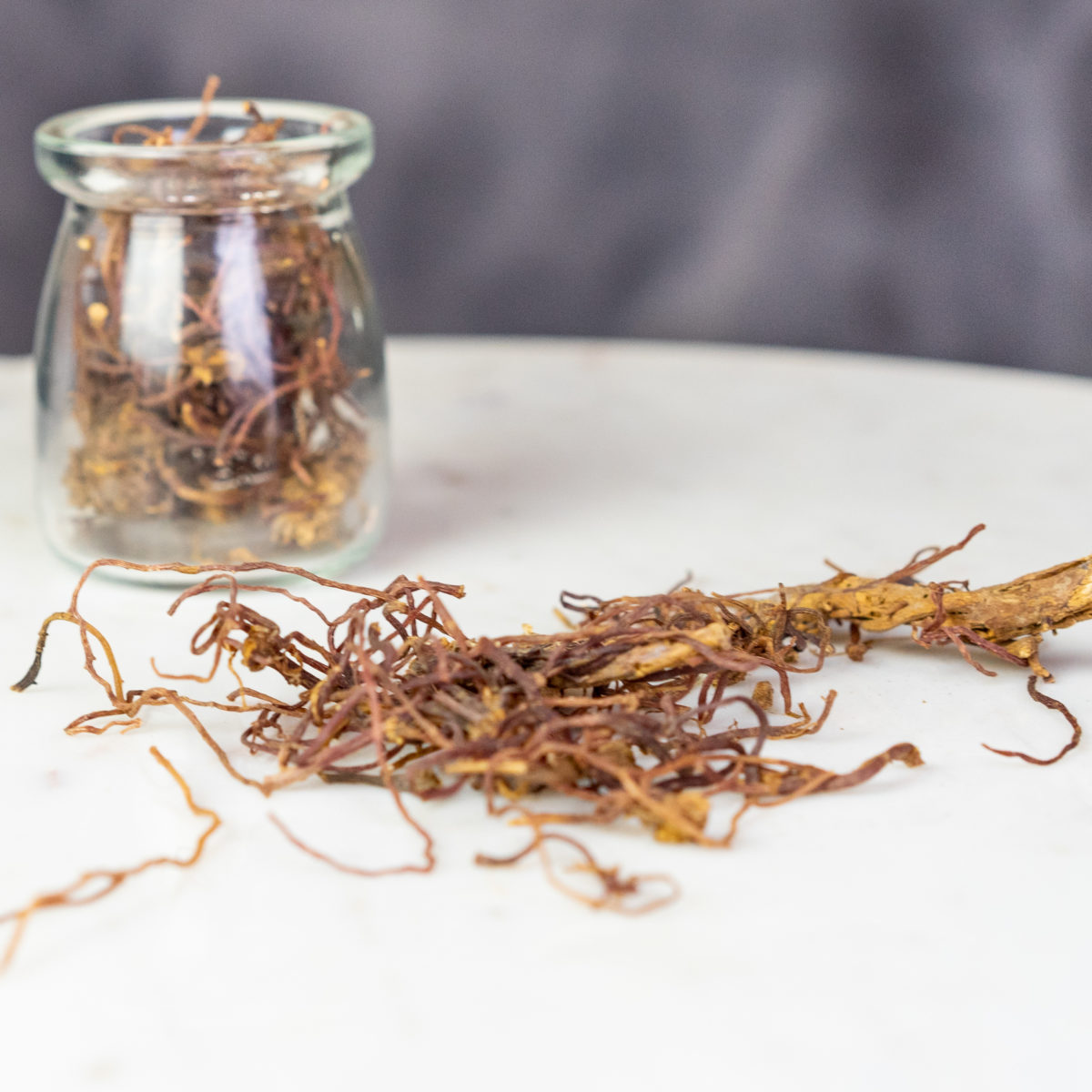
COMMON NAME (Chinese Name)
Aster (Zǐ wǎn)
BOTANICAL NAME
Aster tataricus
USES
Historically, oral aster root supplements have found use in treating inflammatory and mucus-related respiratory conditions. The potency and methods of its effects on these conditions are mostly unstudied (with some limited, dated research on its antitussive and expectorant activities). Moreover, while aster has long been hailed for its antioxidant properties, recent research suggests that the number (and potency) of its antioxidant compounds is less than previously thought.
Aside from its anecdotally-supported uses as a cough remedy, in animal studies, oral aster supplementation has shown promise for regenerating neural activity and cognitive abilities after traumatic brain injury. This suggests it may have some notable effect as a memory- and brain-supportive supplement even in the absence of this kind of damage. Additional studies have confirmed that aster extracts have some anti-neuroinflammatory properties. Aster may also have some notable anti-inflammatory effects, though much more study is needed to say to what degree and under what conditions these effects take place in humans.
Interestingly, some of the most novel and illustrative research on oral aster supplementation has focused on its potential for use in preventing certain oral cancers. This research suggests that regular use of aster extract in oral rinses/toothpastes may dramatically decrease the incidence of oral squamous carcinoma.
Aster roots are categorized in Chinese medicine as an herb that transforms phlegm and stops coughing. They are classified as bitter, slightly warm, and moisturizing and affect the Lung channel.
PREPARATION & ADMINISTRATION
The dried roots of the aster plant are the most common component used in medicinal applications. Common preparations include hot-water decoctions and alcohol-based extracts as well as pre-made powders/granules.
PRECAUTIONS
It is possible to overdose on oral aster supplements. Doing so significantly raises users’ risks of liver damage and somewhat raises the risk of heart damage. Consequently, you should be careful when using aster supplements and be sure to only take the lowest recommended dose. What’s more, people who have a history or increased risk of liver and heart disease should refrain from using aster supplements without first talking to a doctor.
You should consult with a certified herbalist, physician or other qualified healthcare professional before taking Aster.
REFERENCES
Chen, Yijun, et al. “Network Pharmacology-Based Investigation of Protective Mechanism of Aster Tataricus on Lipopolysaccharide-Induced Acute Lung Injury.” International Journal of Molecular Sciences, vol. 20, no. 3, 2019, p. 543., doi:10.3390/ijms20030543.
Hu, et al. “Http://Www.biomedres.info/Biomedical-Research/Aster-Tataricus-Attenuates-the-Neuronal-Cell-Damage-and-Restores-the-Cognitive-Functions-in-Epileptic-Rat.html.” Biomedical Research An International Journal of Medical Sciences, vol. 28, no. 3, 2017.
Ng, T. “Antioxidant Activity of Compounds from the Medicinal Herb Aster Tataricus.” Comparative Biochemistry and Physiology Part C: Toxicology & Pharmacology, vol. 136, no. 2, 2003, pp. 109–115., doi:10.1016/s1532-0456(03)00170-4.
Peng, Wen-Jing, et al. “EVALUATION OF THE ACUTE AND SUBCHRONIC TOXICITYOF Aster Tataricus L. F.” African Journal of Traditional, Complementary and Alternative Medicines, vol. 13, no. 6, 2016, pp. 38–53., doi:10.21010/ajtcam.v13i6.8.
Wang, Rui, et al. “Anti-Cancer Activity Of Aster Tataricus On Scc-9 Human Oral Squamous Carcinoma.” African Journal of Traditional, Complementary and Alternative Medicines, vol. 14, no. 2, 2017, pp. 142–147., doi:10.21010/ajtcam.v14i2.15.
Zhang, Hong-Tao, et al. “Effect of Aster Tataricus on Production of Inflammatory Mediators in LPS Stimulated Rat Astrocytoma Cell Line (C6) and THP-1 Cells.” Saudi Pharmaceutical Journal, vol. 25, no. 3, 2017, pp. 370–375., doi:10.1016/j.jsps.2016.09.001.
Zhou, Wen-Bing, et al. “Astataricusones A–D and Astataricusol A, Five New Anti-HBV Shionane-Type Triterpenes from Aster Tataricus L. f.” Molecules, vol. 18, no. 12, 2013, pp. 14585–14596., doi:10.3390/molecules181214585.
